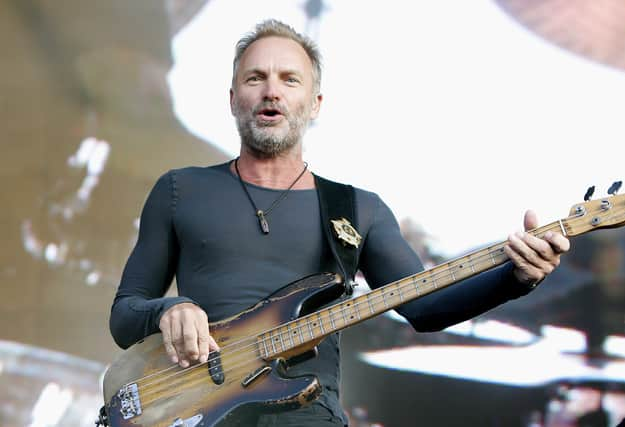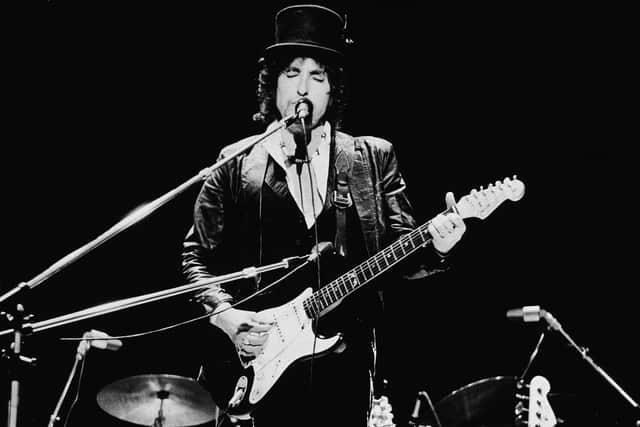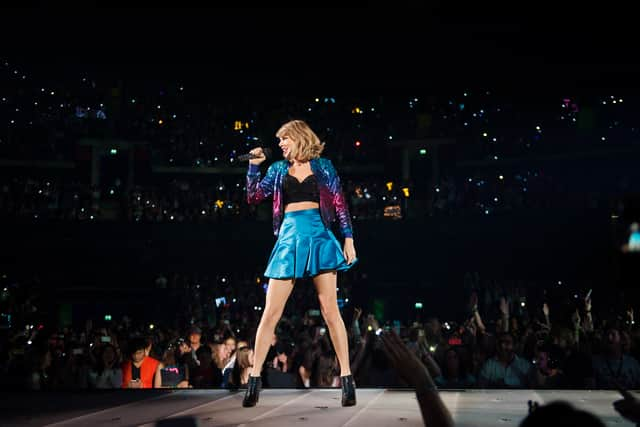Forbes top paid entertainers in 2022: how Sting and Genesis topped the list over Taylor Swift and Bad Bunny
People in this article


Forbes released their top ten list of the highest-earning performers in 2022, and while there were no surprises regarding some of the names on the list, perhaps the biggest surprise was the placement of the entertainers on the list.
While Taylor Swift and Bad Bunny are regularly cited as two of the highest-earning performers in the music world, they only managed to place ninth and tenth in the list, with not even The Rolling Stones entering the top five despite their constant, big arena events.
Advertisement
Hide AdAdvertisement
Hide AdInstead, readers of the publication found that both Genesis, the once prog-rock band turned music vehicle for Phil Collins (after Peter Gabriel left) and Sting were both the highest earners in 2022.
It’s led to some head scratching how they charted so high and earned, in the case of Sting, well over $100m USD more than Taylor Swift, despite her continued chart and streaming success.
But dive into how Sting and Genesis ended up with that figure in 2022 and you’ll find another case once more of an artist selling their back catalogue to a third-party investment firm. Much like Justin Bieber has done with Hipnogsis, earning a cool $200m USD, both Genesis and Sting have sold their music to external companies to handle the exploitation (a legitimate term used in the music industry) of their releases for future use.
But is this just a short-term solution to the continued calls of how streaming services are not paying artists enough? Wouldn’t entertainers as long-time established as Sting make more through streaming services given the amount of content they have?
How much is a back catalogue worth?
Advertisement
Hide AdAdvertisement
Hide AdWall Street Journal reported on figures that several musicians had sold their back catalogue when the trend first started in late 2021 in their article “Why Are Artists Selling Their Music Catalogue?” In the piece, journalist Anne Steele gave some figures to readers to mull over the sales figures for many legacy (older, established) performers.
It reported that Bob Dylan sold 600 copyright to his music for between £245 million to £345 million, while Bruce Springsteen sold both his publishing and recorded music rights to Sony Music Group for just over £450 million. Are these figures arbitrary at all?


Well, no - it depends on how the content can be “exploited” by the new owners rather than pulling a figure out from the air. The works of Bob Dylan for example have been used in countless movies and adverts, generating revenue from both a publishing and a songwriting standpoint.
Meanwhile, The Beach Boys or Tina Turner either allowed a portion of their controlling stake in their music to be bought, allowing some ownership still of how their work is to be used or to allow the ownership of part of their back catalogue and their likeness. The latter option regarding image rights is very much seen with Elvis memorabilia and merchandise as a good example.
Advertisement
Hide AdAdvertisement
Hide AdThe rule of thumb here seems to be not only commercial viability through airplay but commercial viability through licensing the music to advertisers and movie producers.
Why are artists selling their music catalogues?
There are a few theories as to why there has been a widespread speight of musicians handing their music rights over; gone are the days of making music through selling singles or albums. Chalk that up to both the advancement of how we access music and the ease with which we can do it and the ubiquity of music everywhere at the same time.
Ask yourself - when was the last time you ventured to a record store to pick up a new release, as opposed to streaming it online? Those Spotify streaming numbers, despite having a large back catalogue, are still pennies to the pound compared to physical album sales that were the bread-and-butter of the industry in the heydays of Sting and Phil Collins.
Then there is the cynical, if not very real suggestion that a number of these artists have sold their music ahead of a rise in taxation. Rolling Stone reported that upon the inauguration of Joe Biden, amidst the celebration was also the concern regarding plans of a capital gains tax hike, prompting some musicians to instead of relying on long-tail business models to just take the lump sum and run.
Advertisement
Hide AdAdvertisement
Hide AdAge could also be a factor; is it better when you're Bob Dylan’s age to keep making money through streaming revenue or to take a large sum of money to last a very decent amount of time? Whereas Justin Bieber might not have that excuse, there is one more revenue that is often overlooked.
Live music still reigns supreme
Many musicians, both established or emerging under the radar, will tell you that despite chart success, the real mark of success for a musician is going on tour. Which is a revenue stream that many of the artists discussed have not given up to investment firms.


While Taylor Swift and Bad Bunny might rank lower down the list, they’ve made the majority of their fortune in 2022 through hotly anticipated tours, while artists like Sting who still perform live can make a large chunk of cash from personal appearances, touring and merchandise sales.
There is no clear wording as to whether these deals also include merchandise revenue or live receipts (sales from live shows), but with live performances becoming more and more lucrative (and expensive, the average gig-goer will tell you), then the likes of Sting would be more than happy to retain some sense of autonomy over that aspect of their creative output.
This would also explain why Justin Bieber was happy to sell off part of his back catalogue, knowing full well that he would generate almost as much revenue from touring and performing live.
Comment Guidelines
National World encourages reader discussion on our stories. User feedback, insights and back-and-forth exchanges add a rich layer of context to reporting. Please review our Community Guidelines before commenting.
